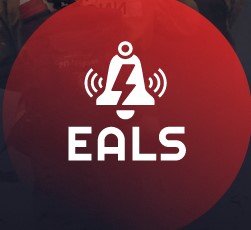The EALS Global Mobile Application
The EALS Global Foundation capstone project involves the creation and implementation of technology to assist in the area of natural disasters. Nepal is prone to disasters of certain types based upon its geographic location and makeup, and much of it consists of quite remote and difficult-to-reach areas. Creating a comprehensive program to assist people in preparing for and reacting to disasters is extremely challenging. Nevertheless, with the help of two development teams, we created an application that uses a variety of data sources to determine the imminence and potential strike zone of disasters like floods and wildfires. One category of data source comes from the most important place—the people themselves who live in such areas. Utilizing crowdsourced data in conjunction with other sources we can create a comprehensive picture of conditions, confirmed on the ground, that will enable us to predict which people will be affected and when, in order to provide them advanced notice to evacuate or take other action. In many of the rugged village areas, time is perhaps the most critical resource for surviving disasters.
In addition to crowdsourced data, the program will draw from satellite data provided by government and private organizations. Many of the necessary agreements are already in place and only require some development tweaks to incorporate them into the technical apparatus. This kind of data provides a literal bird’s-eye view of places few humans ever see, let alone monitor regularly. We also plan to integrate remote weather station data. While there are many areas devoid of coverage in Nepal, various organizations are taking significant strides to increase the numbers of such stations. Discussions are ongoing with some of them to establish a working relationship. This will be needed to construct development kits to remotely ingest and interpret remote sensing data into the mobile application’s architecture.
Collected data is stored on a server. The server dashboard provides a variety of ways to visualize data. More importantly, all of the data is sortable and exportable in a variety of formats. It can then be easily made available in any case where it might be useful, such as in research or for planning purposes. The server also allows for direct communication with specific users of the application. This will be helpful when some data indicates a pending problem, but needs on-the-ground human verification. It will also be helpful for coordinating with rescue and relief organizations when an event occurs. Relatedly, EALS Global is also working with animal rescue organizations to eventually provide services to pets and livestock. For many, pets are like family members, while livestock is critical to the survival of some communities. In either case, these are lives that deserve as much consideration as any in a disaster.
We want to pay a special nod of appreciation to our programming team at Softwarica College. Three graduate students, Albert Maharjan, Sanjay Shrestha, and Sanjila Bura Shrestha are doing exceptional work writing the code for specific geolocation features of the app. For an application providing advanced warning to people of natural disasters, this is a very important aspect for ensuring the appropriate notices go to the appropriate people in a timely fashion. Please go to our initiative page and read their bios.
The next phase of the project is the most interesting part—meeting the people who are going to participate in the rollout. A small team and our Executive Director will travel to the locations where we will test the initiation of field use of the application and meet the local folks who will download it and provide some testing data first, followed by real-world data as the situation arises. Sign up for our newsletter, which sends monthly notices on what events are happening. You can also go to the EALS Twitter, Facebook, or Instagram page.
Sunkoshi River








